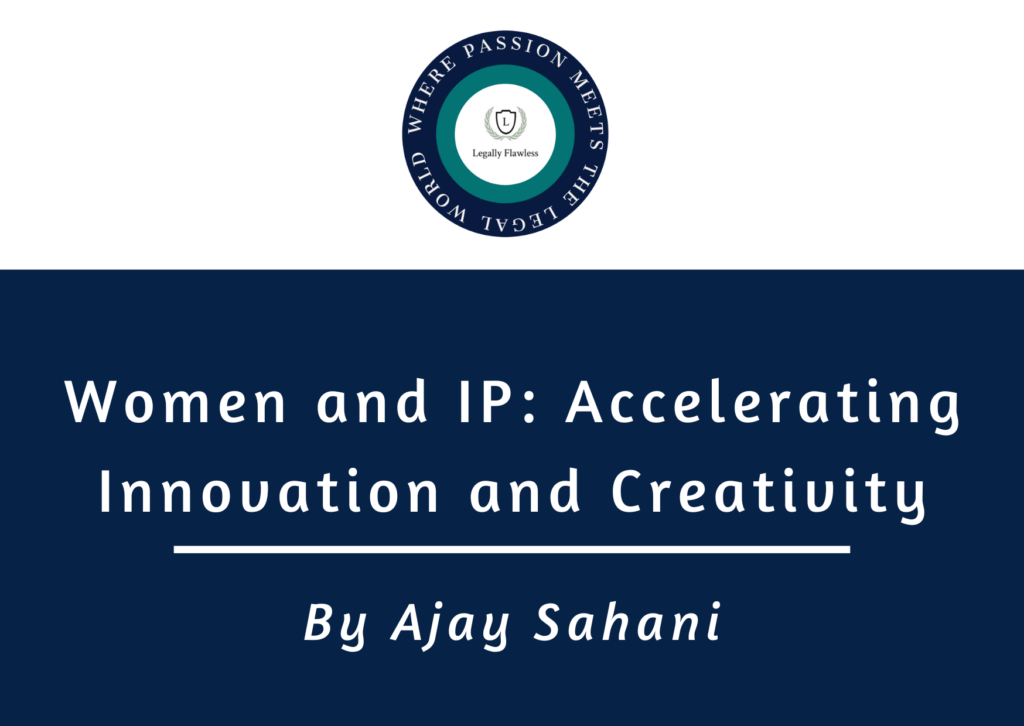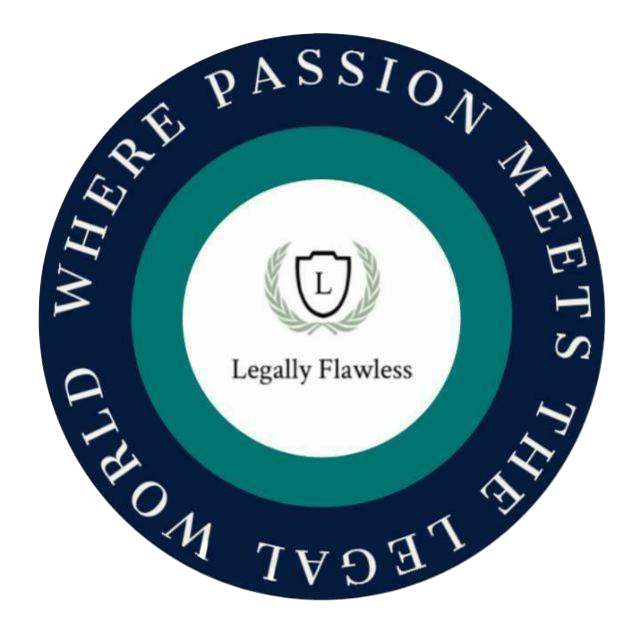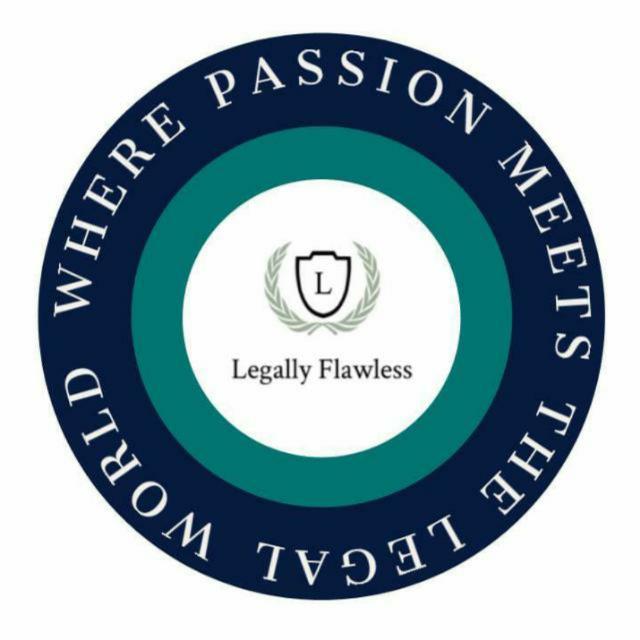
Table of Contents
Introduction
Intellectual property (IP) is an essential aspect of innovation and economic growth. It allows individuals and organizations to protect their creative works, inventions, and brand identities by giving them exclusive rights to use, sell, and license their intellectual property. However, women have historically been underrepresented in the IP system and have faced several challenges that can impede their ability to innovate and succeed. Through this essay, we identify the main barriers to women’s success in intellectual property and explore possible solutions to address these challenges. Ultimately, this essay aims to highlight the importance of diversity and gender equality in the intellectual property system and promote opportunities for women to participate and thrive in this important area of innovation and entrepreneurship. Human innovation and creativity are the engines of progress. Throughout history, innovators and creators, both male and female, in every field have changed our world with the power of imagination and ingenuity. However, some groups are still underrepresented in many areas of intellectual property (IP) use. Their innovative potential is underutilized at a time when the broadest possible spectrum of talent is needed to solve the most pressing problems facing humanity.[1] The protection of intellectual property rights is crucial for promoting innovation, economic growth, and the flourishing of creative industries. However, women have historically been underrepresented in the intellectual property system, facing barriers and challenges that impede their ability to innovate and succeed.
India as an Arbitration Hub: A Distant Reality
Women and IP-The Gender Gap and Sub-Challenges
Women face a variety of challenges in the intellectual property (IP) system and have historically been underrepresented in this area. This section examines some of the main issues that contributed to this underestimation.
First, gender bias in patent filings is a major challenge for women in the IP system. Studies have shown that women are less likely to obtain patents than men, even if the quality of the invention is the same. This is often due to biases in the patent system itself, such as the tendency of patent The gender gap in patenting is too complex and intractable to be resolved by simple numerical equality. This has been empirically proven in cohort studies comparing similarly situated men and women in STEM professions. These studies show that a woman already working in her STEM field is much less likely than a man to take advantage of the patent system examiners to have more experience in male-dominated fields.[2] Women are also less likely to advertise or defend their inventions, which may also contribute to lower patent rates. One reason for this bias may be the lack of diversity in patent examination, as the majority of examiners are men. This lack of diversity can lead to unconscious biases, such as believing that male inventors are more reliable or have more expertise in their field than female inventors.[3] Only around 16 per cent of patent applications filed through WIPO’s Patent Cooperation Treaty (PCT) are from women, leaving countless brilliant minds and their ideas untapped.[4]
Women entrepreneurs’ unequal access to finance is another major obstacle to women’s success in the intellectual property system. Women-run businesses receive a disproportionate share of their venture capital funding, which may make it more difficult for women to bring their inventions to market. There are many possible factors such as Gender discrimination among investors and lack of access to networks and resources that facilitate fundraising.
The lack of female representation in the IP law industry is also a challenge for women in this field. Unless women work with lawyers who have a deeper understanding of their experiences and challenges, they may feel ununderstood and unsupported in court. This can be a particular problem when women face discrimination and harassment about their inventions and creative work.
Limited access to mentorship and networking opportunities: Women may face barriers in accessing mentorship and networking opportunities that are essential for success in the innovation ecosystem. This can be due to factors such as gender bias in the workplace or a lack of female role models in the industry. Stereotypes and cultural expectations as well.
IPR and Civil Aviation: An Analysis
Women and IP Law
Copyright law is an important aspect of the intellectual property system, as it protects the rights of creators of original works, such as authors, artists, and musicians. However, women have faced gender disparities in the creative fields and have experienced challenges in securing copyright protection for their work. It is enshrined in the Universal Declaration of Human Rights 1948, which states that “everyone has the right to the protection of the moral and material interests resulting from any scientific, literary or artistic production of which he [or she] is the author.”[5]
Women authors and artists have also faced challenges in securing copyright protection for their work. Copyright infringement, piracy, and other forms of intellectual property theft are prevalent in many creative industries, and women creators are often disproportionately affected. This can have significant economic and social consequences, limiting the ability of women creators to earn a living from their work and contributing to broader gender inequalities in the industry. To address these issues, there is a need for greater representation and diversity in the cultural industries, including increased opportunities for women creators and greater recognition of their contributions. This can be achieved through policy interventions, education and awareness-raising, and support for women-led initiatives in the creative fields. By promoting greater gender equity in copyright law and the cultural industries more broadly, we can ensure that women creators can fully realize their potential and contribute to a more vibrant and inclusive society. Efforts are being made around the world to address this problem. Intellectual property offices in several countries have introduced initiatives to encourage the participation of women and to support women in the process of creating patents. Partner government agencies in the United States, for example, the Patent and Trademark Office ( USPTO) offer reduced fees and free legal advice on patent application preparation. Additionally, the USPTO created the Empowering Women’s Entrepreneurship Program. It is a community-focused, collaborative and creative initiative to encourage and empower more women entrepreneurs across America.[6]
Empowering Women in Intellectual Property: Driving Innovation and Creativity Forward
Every year 26th of April is celebrated as World IP Day. The theme for this year’s, IP days is Women and IP: Accelerating Innovation and Creativity. [7]As the theme suggests the IP Day for this year is focused on women in the field of IP. As we have earlier discussed that how so many challenges are faced by women in the field of IP despite that they have managed to give their mark to the IP sector. As we look around us, it is clear that we live in an era of unprecedented innovation and creativity. From advances in technology to breakthroughs in medicine and the arts, we are constantly amazed by the incredible achievements of humanity. But amidst all this progress, there is a glaring inequality that must be addressed: the underrepresentation of women in the intellectual property system. For too long, women have faced systemic barriers and challenges in the innovation ecosystem. From gender bias in patent applications to unequal access to funding for female entrepreneurs, the lack of female representation in the IP legal profession, and the historical underrepresentation of women in creative fields, the challenges are many and complex.
But despite these obstacles, women have continued to innovate and create at a remarkable pace. From Marie Curie, the first woman to win a Nobel Prize, to Ada Lovelace, the world’s first computer programmer, women have made ground-breaking contributions to science, technology, and the arts. Women also play a key role in educating the next generation of innovators and entrepreneurs. Many women are involved in academic and research institutions, inspiring and mentoring young women as they pursue careers in science, technology, engineering and mathematics (STEM). By encouraging more women to become inventors and creators, these women are contributing to the creation of a more diverse and inclusive intellectual property industry. International Women’s Day is an important time to celebrate the contributions of women in all fields, including intellectual property. Women are at the forefront of invention, advocacy, entrepreneurship and education, and their impact on the industry is immense. As we continue to strive for a fairer and more inclusive world, it is important to recognize and celebrate the achievements of women in intellectual property and support their continued success.[8] Yet, despite these achievements, women remain woefully underrepresented in the intellectual property system. This underrepresentation is not only a moral issue, but a practical one as well. When women are excluded from the innovation ecosystem, the entire society loses out on the benefits of their contributions. Research has shown that increasing gender diversity in the workforce leads to greater innovation and productivity, as well as better financial performance for companies[9]. By excluding women from the IP system, we are limiting our potential for growth and progress. The issue of gender bias in patent applications and awards is particularly concerning.
Studies have shown that women are less likely than men to file patent applications, and when they do, their applications are less likely to be granted. This bias can stem from a range of factors, including gender stereotypes and unconscious biases held by patent examiners and other decision-makers. The result is a system that fails to recognize and reward the contributions of women innovators and creators. Women entrepreneurs and small business owners also face significant challenges in accessing funding and support for their ventures. Despite evidence that women-led companies have a higher return on investment, women receive only a fraction of venture capital funding compared to men. This lack of funding and support can limit women’s ability to bring their ideas to market and create the innovations of tomorrow. In creative fields such as music, film, and literature, women also face significant challenges in securing copyright protection for their work. Women creators are often disproportionately affected by copyright infringement and piracy, which can have significant economic and social consequences. The lack of representation and diversity in the cultural industries further perpetuates gender biases and stereotypes, limiting the ability of women creators to succeed.
The issue of women and intellectual property is multifaceted and complex. But there are concrete steps that can be taken to address these challenges and promote greater gender equity in the innovation ecosystem. These include providing greater education and mentorship opportunities for women, reducing gender bias and discrimination, increasing the representation of women in the legal and business professions, and supporting women-led initiatives in the creative fields. By taking these steps, we can create a more inclusive and equitable innovation ecosystem that benefits everyone. We can recognize and reward the contributions of women innovators and creators, and ensure that they have equal opportunities to succeed. We can create a future where the full potential of human creativity and innovation is realized, and where gender equity is a foundational principle of the intellectual property system. In conclusion, the issue of women and intellectual property is not just an abstract concept, but a deeply emotional one. It is about the potential of half of our society to create and innovate, and the barriers that prevent them from doing so. It is about the stories and ideas that go untold, and the innovations that go unrealized. But it is also about the hope and determination of women to break down these barriers, overcome the challenges and make a world where men and women lead the world together.
This article is authored by Mr. Ajay Sahani, 2nd year Student pursuing BALLB from ILS Law college, Pune
[1] Gender equality and intellectual property (no date) WIPO. Available at: https://www.wipo.int/women-and-ip/en/ (Accessed: April 24, 2023).
[2] Bridging the gender gap in intellectual property (no date) WIPO. Available at: https://www.wipo.int/wipo_magazine/en/2018/02/article_0001.html (Accessed: April 25, 2023).
[3] 5N8F-BSNQ: Tiplj.org: Free Download, Borrow, and Streaming (no date) Internet Archive. Available at: https://archive.org/details/perma_cc_5N8F-BSNQ (Accessed: April 26, 2023).
[4] Together we can: Approaches to empowering women in IP (no date) WIPO. Available at: https://www.wipo.int/wipo_magazine_digital/en/2023/article_0005.html (Accessed: April 26, 2023).
[5]Highsmith, A.M. (2023) Law enforcement’s role in protecting the Rights of Women Innovators & Creators, U.S. Chamber of Commerce. U.S. Chamber of Commerce. Available at: https://www.uschamber.com/intellectual-property/law-enforcements-role-in-protecting-the-rights-of-women-innovators-creators#:~:text=IP%20Rights%20are%20Women’s%20Rights&text=In%20fact%2C%20it%20is%20enshrined,she%5D%20is%20the%20author.%E2%80%9D (Accessed: April 26, 2023).
[6] Highsmith, A.M. (2023) Law enforcement’s role in protecting the Rights of Women Innovators & Creators, U.S. Chamber of Commerce. U.S. Chamber of Commerce. Available at: https://www.uschamber.com/intellectual-property/law-enforcements-role-in-protecting-the-rights-of-women-innovators-creators#:~:text=IP%20Rights%20are%20Women’s%20Rights&text=In%20fact%2C%20it%20is%20enshrined,she%5D%20is%20the%20author.%E2%80%9D (Accessed: April 26, 2023).
[7] World intellectual property day 2023 – celebrating creativity & Innovation (no date) World Intellectual Property Day 2023 – Celebrating Creativity & Innovation. Available at: https://www.wipo.int/ip-outreach/en/ipday/ (Accessed: April 26, 2023).
[8] Women leading the way in intellectual property: Celebrating their contributions on International Women’s Day (no date) Patexia. Available at: https://www.patexia.com/feed/women-leading-the-way-in-intellectual-property-celebrating-their-contributions-on-international-women-s-day-20230308 (Accessed: April 26, 2023).
[9] Research: When gender diversity makes firms more productive (2021) Harvard Business Review. Available at: https://hbr.org/2019/02/research-when-gender-diversity-makes-firms-more-productive (Accessed: April 26, 2023).
All efforts are made to ensure the accuracy and correctness of the information published at Legally Flawless. However, Legally Flawless shall not be responsible for any errors caused due to oversight or otherwise. The users are advised to check the information themselves.


